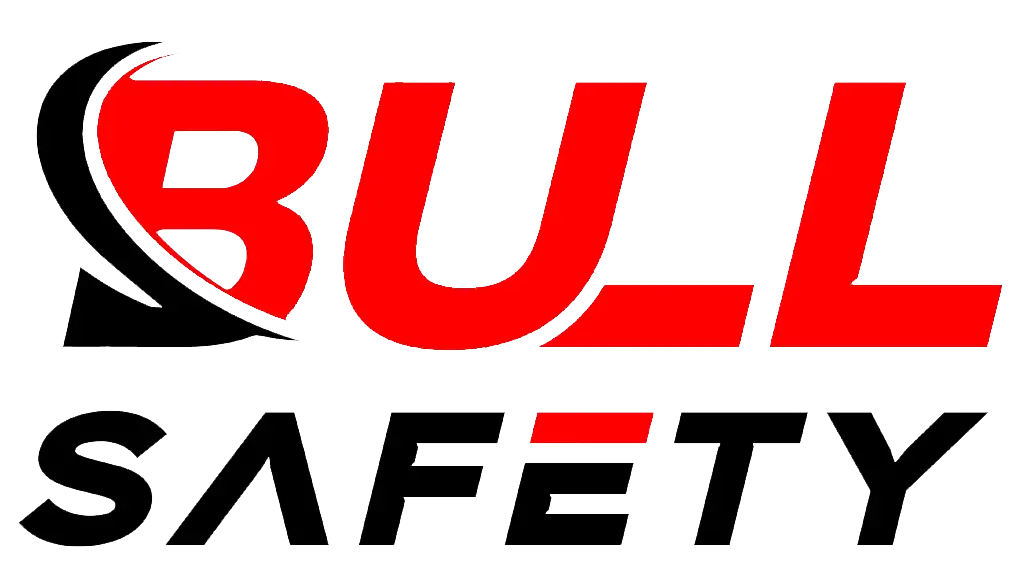Your customers need reliable gardening gloves, but top-tier options are expensive. Settling for cheap gloves leads to poor protection and unhappy customers, which hurts your reputation. You can offer a range of high-quality, cost-effective gloves that meet every need.
The key is to source from an OEM partner who provides a specialized range of certified gloves. This allows you to offer everything from budget to premium options. You can maximize value for your customers and for your own business.
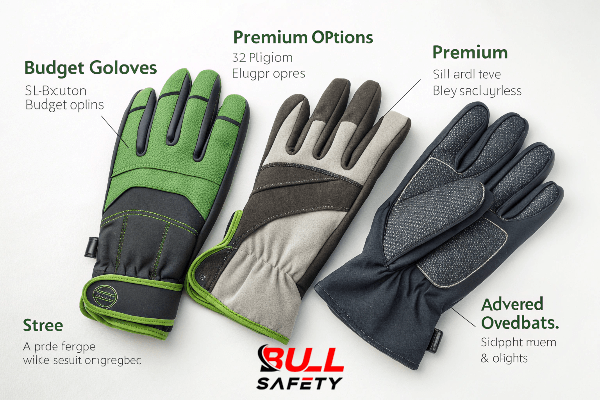
Gardening Glove Selection.
This isn’t just about selling more gloves. It is about becoming the go-to expert for your clients. When a customer comes to you, they should feel confident they are getting the right product for their specific task, whether it’s planting delicate flowers or clearing thorny brush. Let’s break down how you can build this specialized portfolio, starting with the most accessible options.
Are Budget-Friendly Gloves Under $10 Really Protective?
You see ultra-cheap gloves1 everywhere, but you are probably skeptical of their quality. Selling a flimsy glove can lead to customer complaints. They will complain when the gloves fail against thorns or rough soil. But, some budget gloves offer excellent protection for general tasks when chosen correctly.
Yes, budget-friendly gloves2 can be protective. You should look for options like nitrile or latex-coated nylon gloves3. These gloves provide good grip, dexterity, and resistance for many light to medium-duty gardening tasks. They offer great value without sacrificing essential safety.
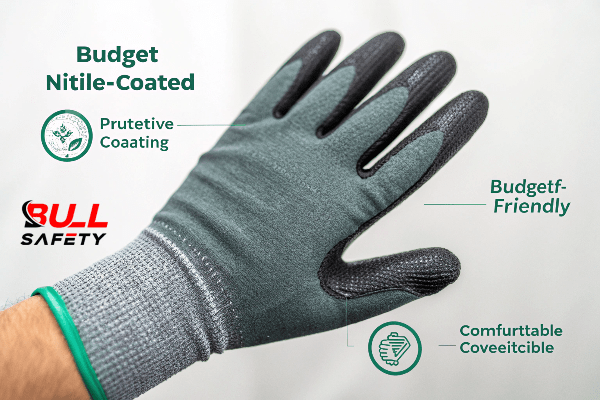
Budget Nitrile Gardening Glove.
I have seen many partners succeed by being smart about their entry-level offerings4. The goal is to provide real value. A cheap glove that falls apart after one use is not value. A low-cost glove that performs well for general tasks is a winner for everyone. I remember a partner, a procurement manager like you, who was hesitant to stock anything under $10. He thought it would damage his brand’s reputation for quality. I sent him some samples of our 13-gauge nylon gloves5 with a crinkle latex palm. He was surprised by their durability for everyday gardening tasks like weeding and potting. They gave a fantastic grip and stood up to weeks of use. They soon became one of his best-selling items because they offered dependable quality at a price anyone could afford.
What to Look For in an Entry-Level Glove
| Feature | Good Choice | Why It Matters |
|---|---|---|
| Liner Material | 13-gauge Polyester/Nylon | Provides a balance of comfort and durability without much cost. |
| Coating | Crinkle Latex | Offers excellent grip, flexibility, and good puncture resistance for its cost. |
| Coating | Smooth Nitrile | Good for dexterity and resisting oils or water-based chemicals in fertilizers. |
| Construction | Seamless Knit | Eliminates uncomfortable seams, allowing for longer wear without irritation. |
Where is the sweet spot between cost and performance in gardening gloves?
Your customers often want more than basic protection. But they do not want to pay for top-of-the-line specialty gloves. If you only offer cheap or premium options, you miss a huge part of the market. You can fill this gap with mid-range gloves6 that offer advanced features at a great price.
The sweet spot is in gloves that offer specific features like better grip, some cut resistance, or waterproofing. Microfoam nitrile7 or sandy nitrile coatings on a comfortable liner give excellent performance for more demanding tasks. These do not have the premium cost of highly specialized materials.
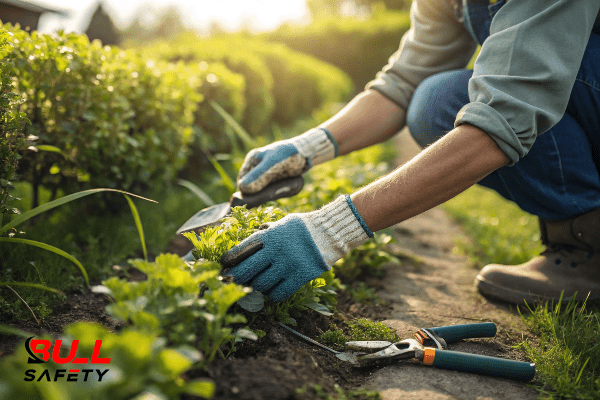
Mid-Range Performance Gloves.
Mid-range gloves are where you can really start to show your expertise as a supplier. These are for the serious hobbyist or the professional landscaper who needs more from their equipment. They are handling wet tools, sharp stones, and woody plants. A simple coated glove is not enough. I once worked with a wholesaler, Ella, whose clients in the landscaping business were tearing through basic gloves every week. We developed a mid-range option for her. It used a 15-gauge nylon/spandex liner8 for flexibility and a sandy nitrile palm coating9. This finish acts like tiny suction cups, providing amazing grip in wet and oily conditions. Her clients could handle slippery stones and tools safely. The gloves also lasted much longer. Her sales in that category doubled because she solved a real problem for her customers.
Balancing Features and Price
| Glove Type | Coating | Best Use Case | Key Benefit |
|---|---|---|---|
| Basic Nitrile | Smooth Nitrile | General Weeding, Potting | Good dexterity, low cost |
| Mid-Range Foam | Microfoam Nitrile | Landscaping, Tool Handling | Excellent grip, breathability |
| Mid-Range Sandy | Sandy Nitrile | Wet Conditions, Masonry | Superior wet grip, high abrasion resistance |
| Mid-Range HCT | PU/Nitrile Blend | Delicate Assembly, Planting | High tactile sensitivity, great dexterity |
Which glove materials offer the best value for specific tasks?
Customers can be confused by all the material options. They see Nitrile10, Kevlar, Leather11, and Bamboo gloves on the shelf. If you cannot explain the specific benefits of each, you cannot sell the right glove. This leads to lost sales. By understanding the core materials, you can guide customers to the perfect, value-driven choice.
For the best value, you must match the material to the task. Nitrile is great for general-purpose use with good dexterity. For serious protection from thorns and cuts, leather or gloves with a cut-resistant liner are better, as noted by sources like coated options offer a smart blend of grip and protection for most jobs.
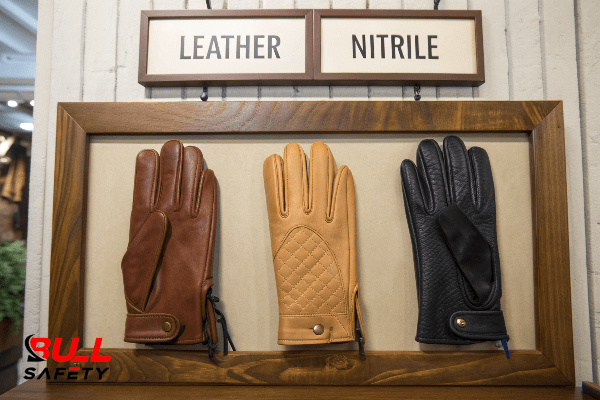
Gardening Glove Materials.
The era of the ‘one-size-fits-all’ gardening glove is over. I have seen my partners find great success when they start thinking like specialists. They stop selling ‘gardening gloves’ and start offering ‘rose pruning gauntlets12‘ or ‘seedling planting gloves’. This expertise is what sets them apart in a crowded market. My job as their manufacturing partner is to provide the diverse, high-quality stock that backs up their expert recommendations. We can produce durable leather gloves for heavy-duty clearing. We also make lightweight, high-dexterity PU-coated gloves13 for handling seeds. Having this range means you never have to turn a customer away. You always have the perfect solution for their specific need, reinforcing your position as a trusted advisor.
Matching the Material to the Mission
| Material | Primary Task | Pros | Cons |
|---|---|---|---|
| PU Coated Nylon | Planting Seedlings, Delicate Work | Excellent dexterity, tactile feel | Low puncture resistance |
| Nitrile Coated HPPE | Pruning, Using Sharp Tools | Good cut resistance, strong grip | Less dexterity than PU |
| Goatskin Leather | Rose Pruning, Handling Thorns | High puncture/thorn resistance | Can be stiff, less breathable |
| Latex Coated Cotton | General Yard Work, Debris Clearing | Great grip, flexible, low cost | Can cause latex allergies |
Some manufacturers even offer unique options like gloves with built-in claws for digging,these specializations create new opportunities.
How can wholesalers maximize protection for their customers while minimizing costs?
Balancing your inventory costs with trying to offer a broad, protective product range is a constant challenge. If you stock the wrong mix of products, you end up with dead inventory and missed sales. You need a better strategy. Partnering with the right OEM manufacturer is the key to a cost-effective, high-performance glove program.
You can maximize value by partnering directly with a manufacturer like us. We offer OEM/ODM services, as highlighted by other manufacturers, to create customized and certified gloves. These gloves meet specific market needs and price points. This approach eliminates middlemen, reduces your procurement costs, and ensures quality control from the very start.

OEM Manufacturing Partnership.
Working directly with an OEM changes your business. You are no longer just a reseller. You become a product developer. A general manager, Mr. Stenning, approached me last year with a problem. His company was losing bids because their glove offerings were too generic and expensive. We worked together to design a three-tiered range under his own private brand14. We developed a budget-friendly nitrile glove, a mid-range microfoam glove, and a premium A3 cut-resistant glove15. All gloves were certified to ANSI and EN standards, giving his customers complete confidence. Because he was sourcing directly from my factory, his costs were lower. He could now compete on any bid and meet any customer need. He transformed his business from a simple distributor to a market leader with a curated product line.
The Strategic Advantage of OEM Partnership
| Strategy | Action | Your Benefit |
|---|---|---|
| Direct Sourcing | Eliminate importers and trading companies. | Lower costs, higher profit margins, and a direct line of communication. |
| Customization | Specify colors, branding, materials, and features. | Create exclusive products that your competitors cannot offer. |
| Quality Assurance | Work with an ISO/CE/ANSI certified partner. | Reduce risks, ensure compliance, and build a reputation for quality. |
| Supply Chain Control | Build a long-term relationship with one factory. | Achieve stable lead times, reliable stock, and priority service. |
Conclusion
Stop selling only generic gloves. Offer a specialized, quality-assured range from a direct OEM partner. This will make you an expert, build trust, and grow your business significantly.
-
Understanding the benefits and drawbacks of ultra-cheap gloves can help you make informed purchasing decisions. ↩
-
Learn how to select budget-friendly gloves that provide protection and comfort while gardening without breaking the bank. ↩
-
Discover the advantages of using nitrile or latex-coated nylon gloves for gardening tasks, ensuring safety and comfort. ↩
-
Explore this link to discover how smart entry-level offerings can enhance your brand and attract more customers. ↩
-
Learn about the advantages of 13-gauge nylon gloves, including durability and grip, to improve your gardening experience. ↩
-
Explore this link to understand how mid-range gloves can meet customer needs without breaking the bank. ↩
-
Learn about Microfoam nitrile to see how it enhances glove performance and comfort for various tasks. ↩
-
Learn how a 15-gauge nylon/spandex liner enhances glove flexibility, comfort, and durability—key factors for professionals needing reliable hand protection. ↩
-
Discover the advantages of sandy nitrile palm coating for better grip and durability in challenging work environments. ↩
-
Explore the advantages of Nitrile gloves to understand their versatility and suitability for various tasks. ↩
-
Discover why Leather gloves are preferred for serious protection and how they can enhance safety in demanding environments. ↩
-
Explore this link to discover top-rated rose pruning gauntlets that enhance your gardening experience and efficiency. ↩
-
Check out this resource to learn how lightweight, high-dexterity PU-coated gloves can improve your seed handling and gardening tasks. ↩
-
Explore how developing a private brand can enhance your business’s market position and profitability. ↩
-
Learn about A3 cut-resistant gloves to understand their importance in safety and protection for various industries. ↩
